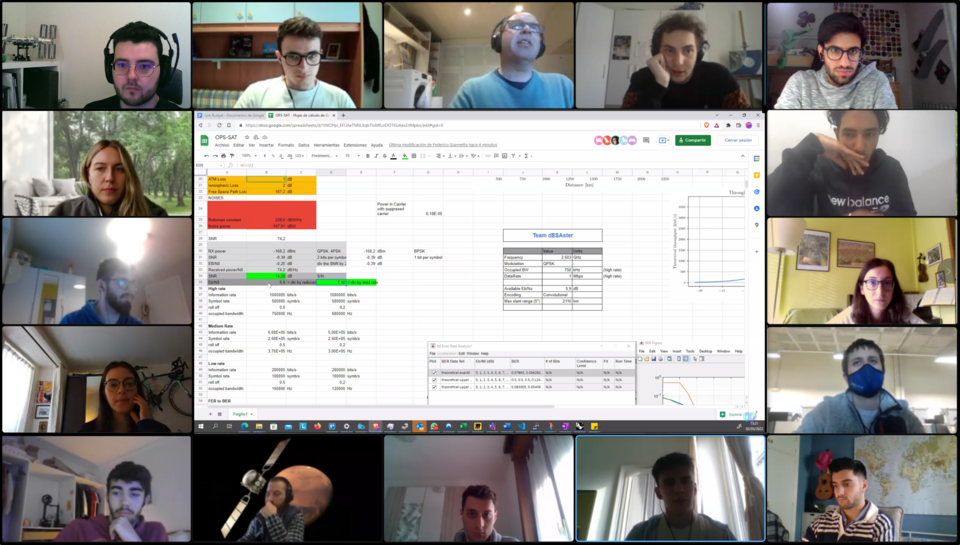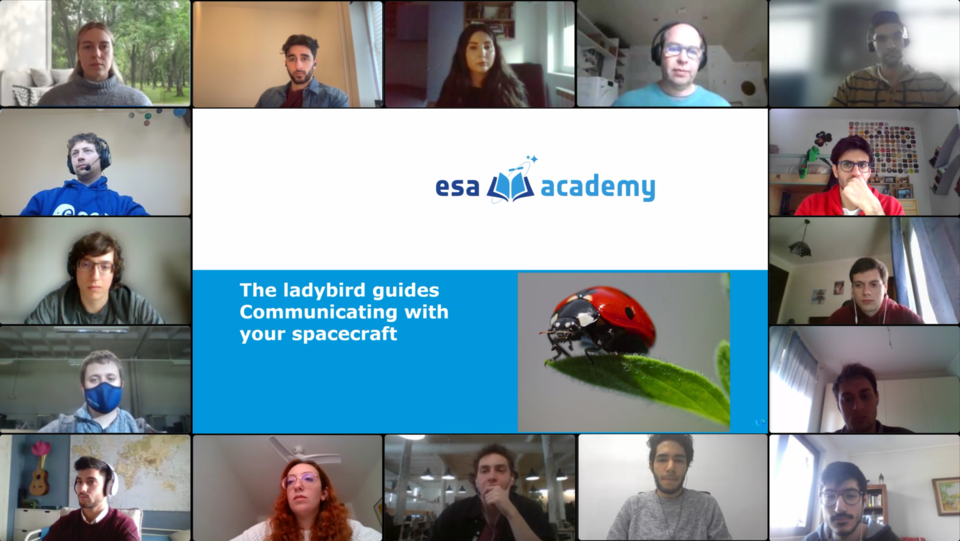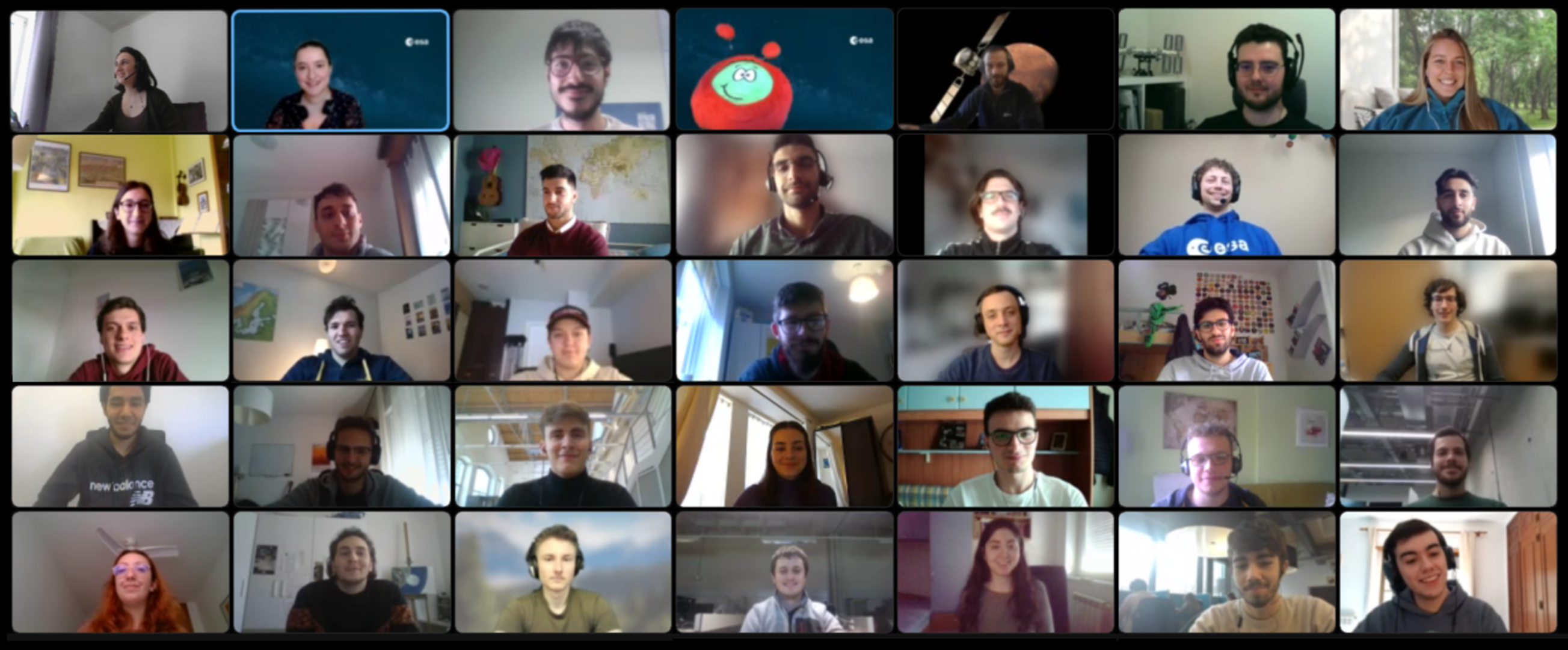Online Ladybird Guide to Spacecraft Communications Training Course 2022 sees University students problem-solve like ESA engineers!
In brief
On 21 February, ESA Academy’s Training and Learning Programme gave a warm welcome to 30 university students attending the Online Ladybird Guide to Spacecraft Communications Training Course, 2022 edition. The students, from 26 different universities and 10 ESA Member States, Canada and Slovenia, were all studying for bachelor, master or PhD degrees. Two weeks of intense but highly enjoyable tuition would follow, with the students bonding online despite never meeting face-to-face due to the ongoing COVID-19 pandemic.
In-depth
The primary objective of the course was to introduce students to the concepts underlying spacecraft telecommunications. Following a “Ladybird” style meant that lectures avoided complex analytical or mathematical detail, instead making generous use of real-life examples and intuitive diagrams.
‘’The Ladybird-style training course really helped me to truly understand the fundamental concepts and how they are intuitively interconnected,” explained a Canadian student from Polytechnique Montréal. “The training materials, trainers, and overall coursework surpassed all my expectations, even if it was online! Many thanks for such rewarding experience! I highly recommend this training course to anyone passionate about spacecraft operations and communications!’’

The majority of the course was run by an ESA Engineer from ESOC, the European Space Operations Centre in Darmstadt, Germany. Equipped with many years of experience, he was able to describe a vast range of genuine scenarios he had encountered during his career. This brought topics to life for the students, immersing them in the problems that can arise during a real space mission. Supplementary lectures were offered by two ESA experts, presenting the ground station activities at ESEC-Redu and the navigation signals and modulation techniques, as well as the payload in orbit testing of Galileo, the European Global Navigation Satellite System (GNSS).
A broad variety of subjects were covered over eight afternoon sessions:
- Signal modulation and demodulation
- Channel coding
- Communication protocols
- Transmission
- Signal reception
- An overview of several real ground stations
“The Ladybird approach allows any STEM student to understand basic concepts that stick in your mind,” explained a Spanish Student from University of the Basque Country, “instead of relying on lots of equations that you would forget the next day.’’
This theoretical content was put into practice across two group exercises.

Beacon Decoding
Students were challenged to use their newly-gained knowledge on protocols, learning how to derive engineering values from raw telemetry. They were given raw (encoded) telemetry beacons and the OPS-SAT UHF specification, then tasked with creating a spreadsheet to automatically parse the relevant data and translate it into human readable engineering parameters such as onboard temperatures, received signal strengths, or packet counters. As a bonus, the students also learned to apply fundamental “sanity checks” on the decoded data to see if the results were accurate.
Link Budget
Students were required to combine and apply their theoretical knowledge by modelling the entire space to ground communications chain against a set of technical and legal requirements and constraints. They developed a spreadsheet to model the communications link, in addition to researching the required facts and figures, and defining protocols to ensure the spacecraft would operate as intended.
These group exercises were designed to push students out of their comfort zones, building on their existing foundation of knowledge and ultimately reaching heights few had thought possible even just a few days earlier. The students found themselves problem-solving like communications engineers, and having a lot of fun while doing so!
Alongside the lectures and challenges, the participants were given a virtual desk tour of the OPS-SAT control software, and even had the chance to follow the operations of this satellite in real-time during a live pass.
’It was a wonderful opportunity that truly enriched my engineering knowledge,” summarised a Romanian student from University Politehnica of Bucharest. “I am especially grateful for the quality of the information delivered directly by the experts. After this course, I can say that we, the participants, are now not only more knowledgeable about spacecraft communications, but also a little more operations-smart in this domain."
To find more information about upcoming and future ESA Academy training opportunities, please check out current opportunities.
Contact: tlp@esa.int


